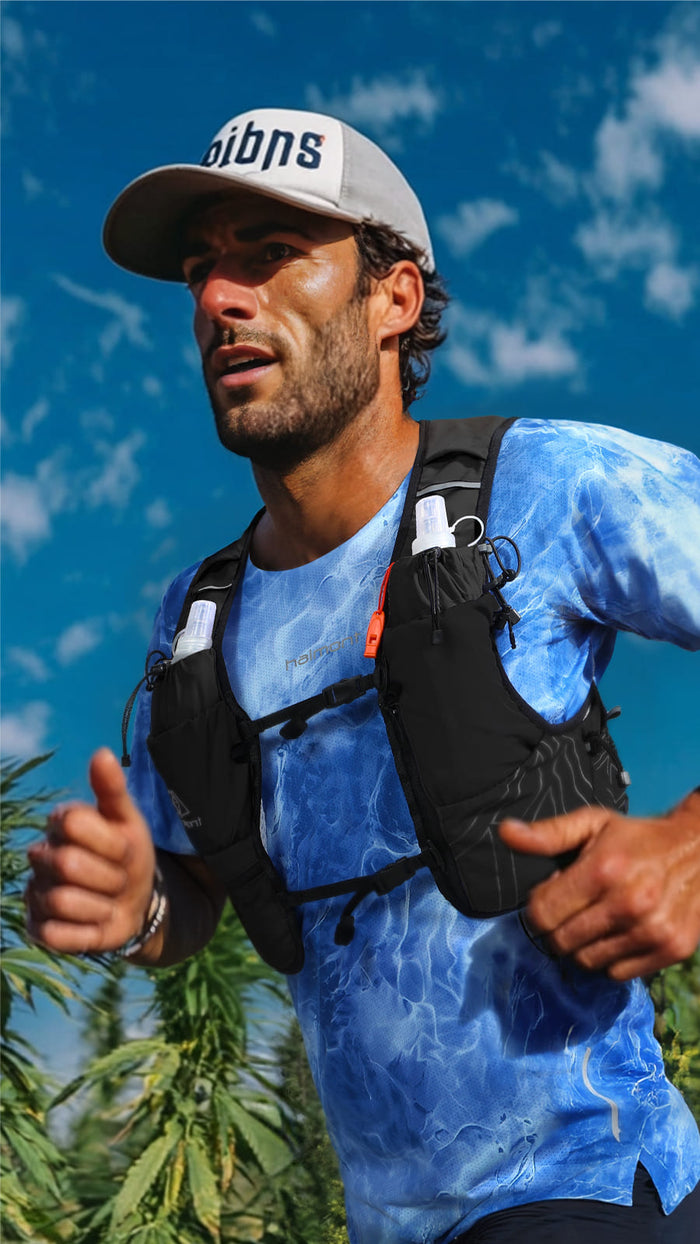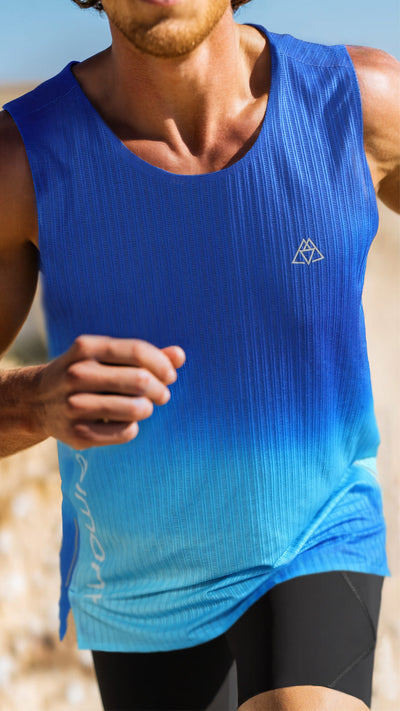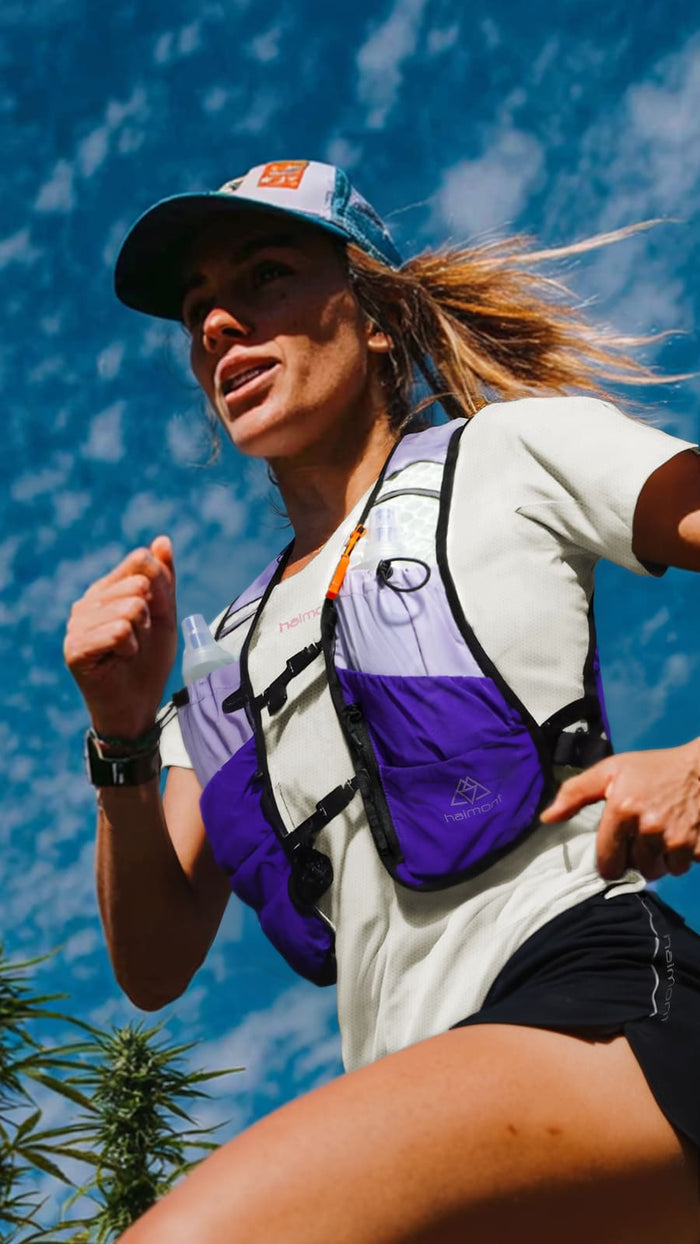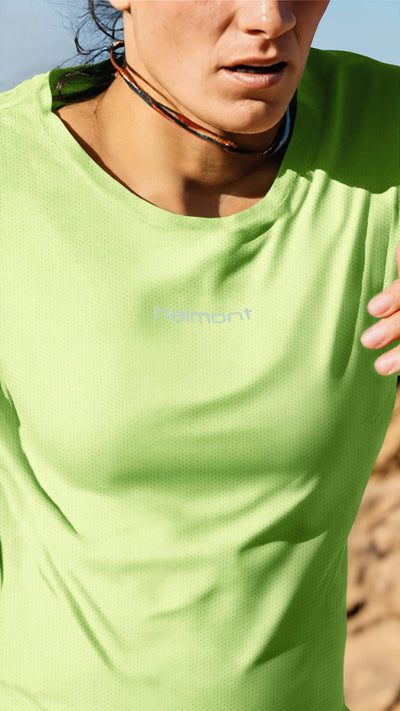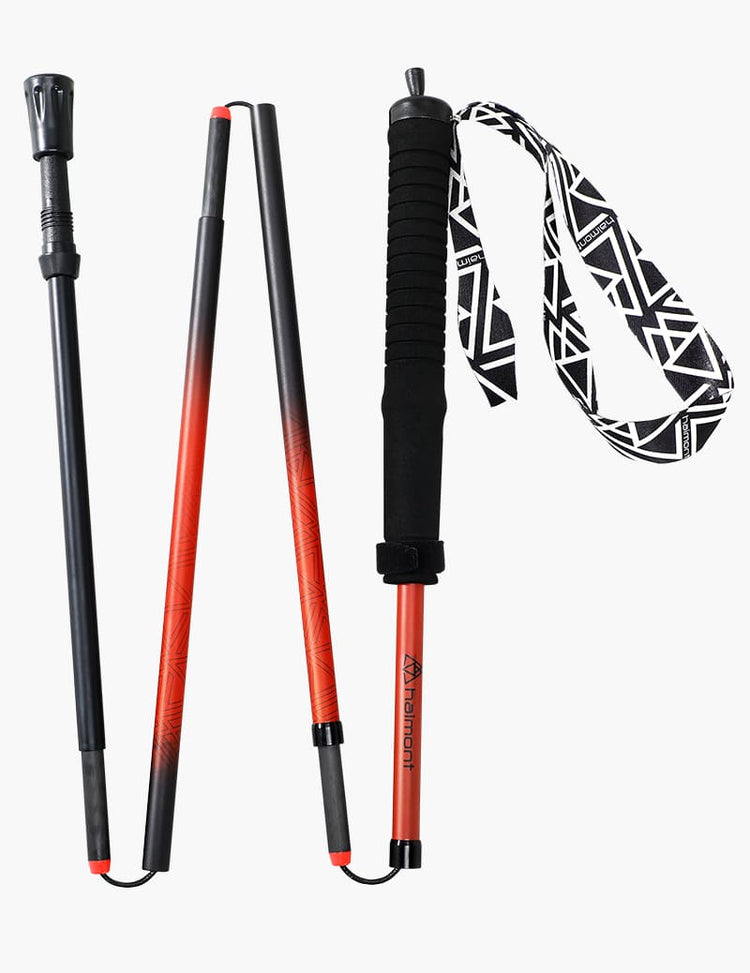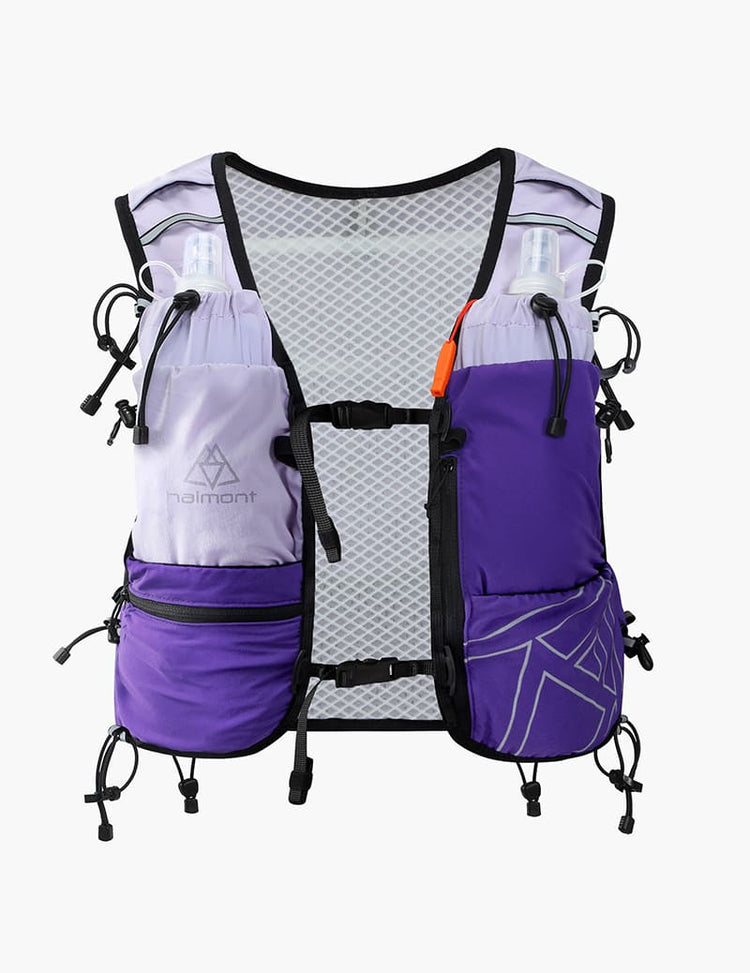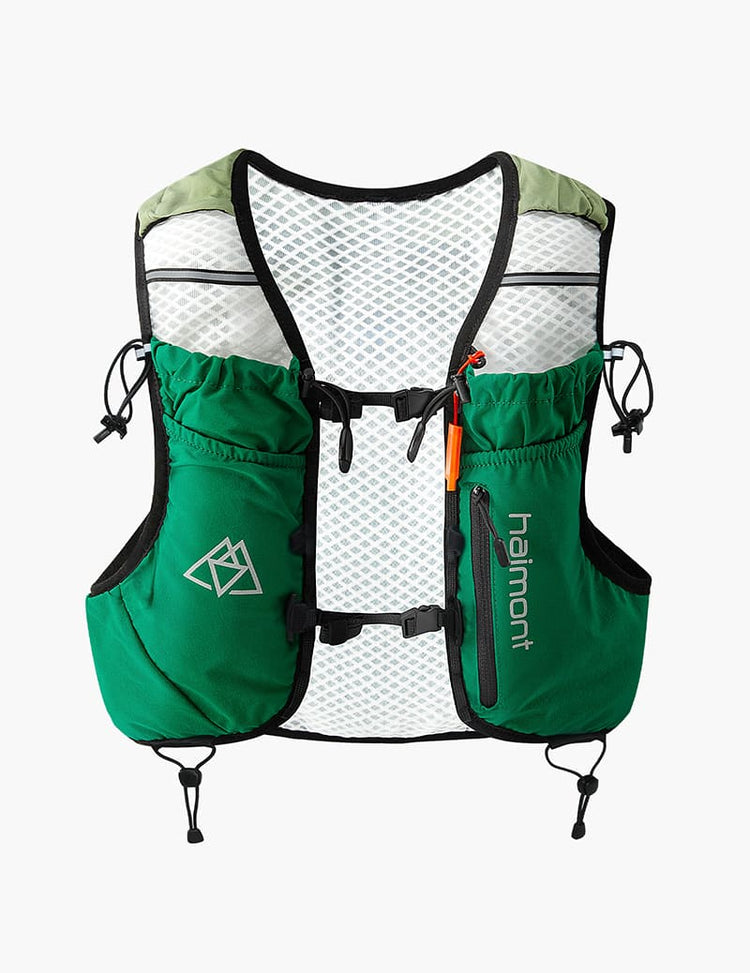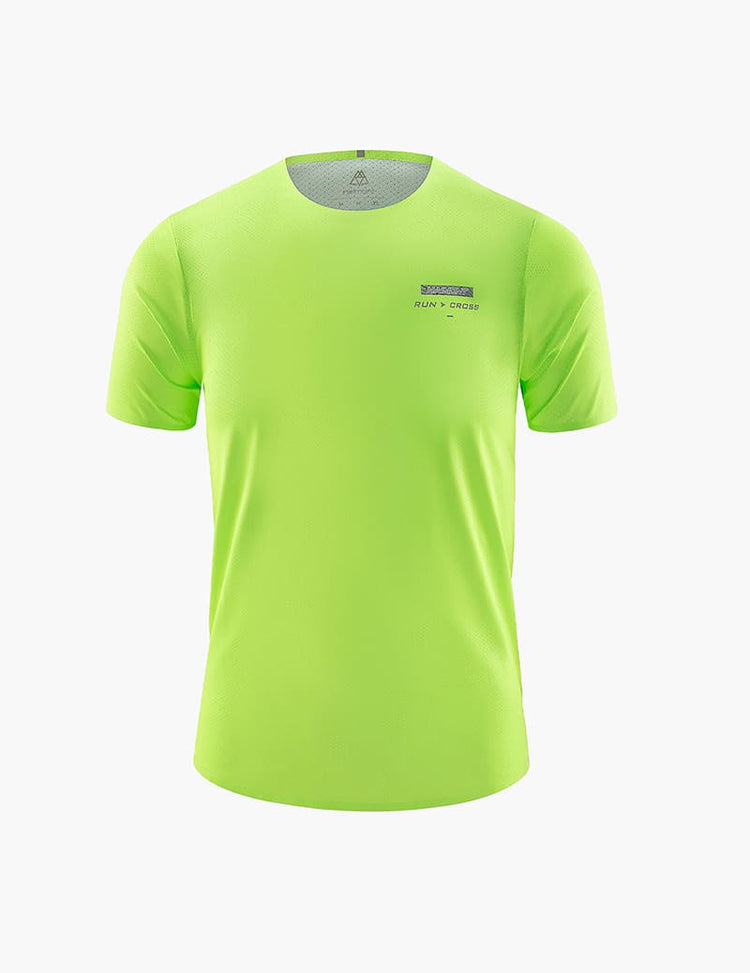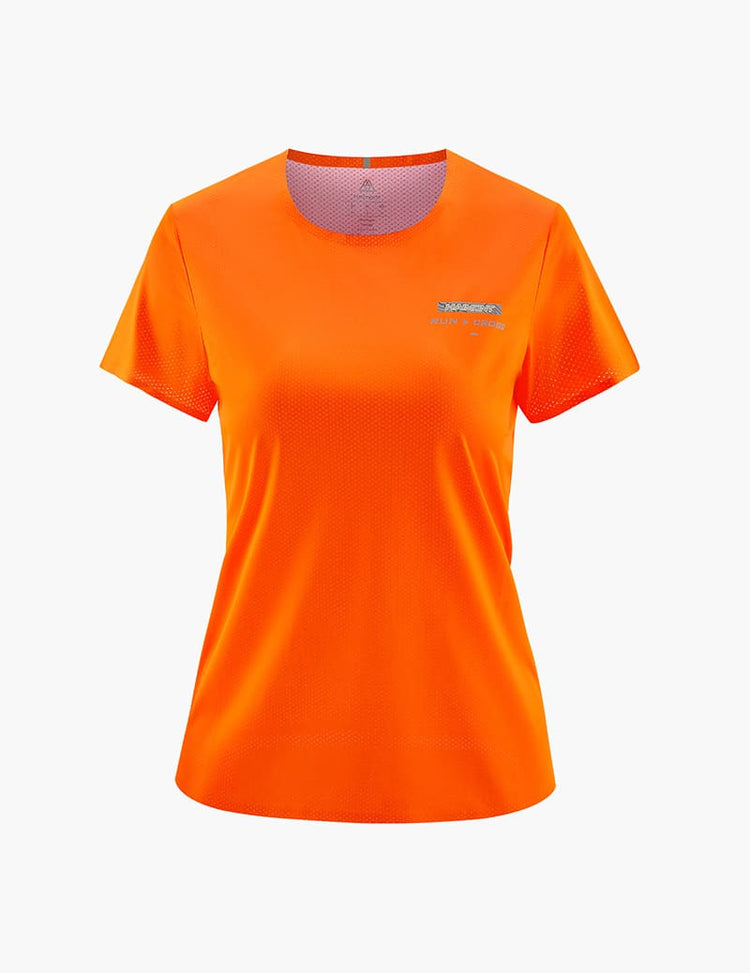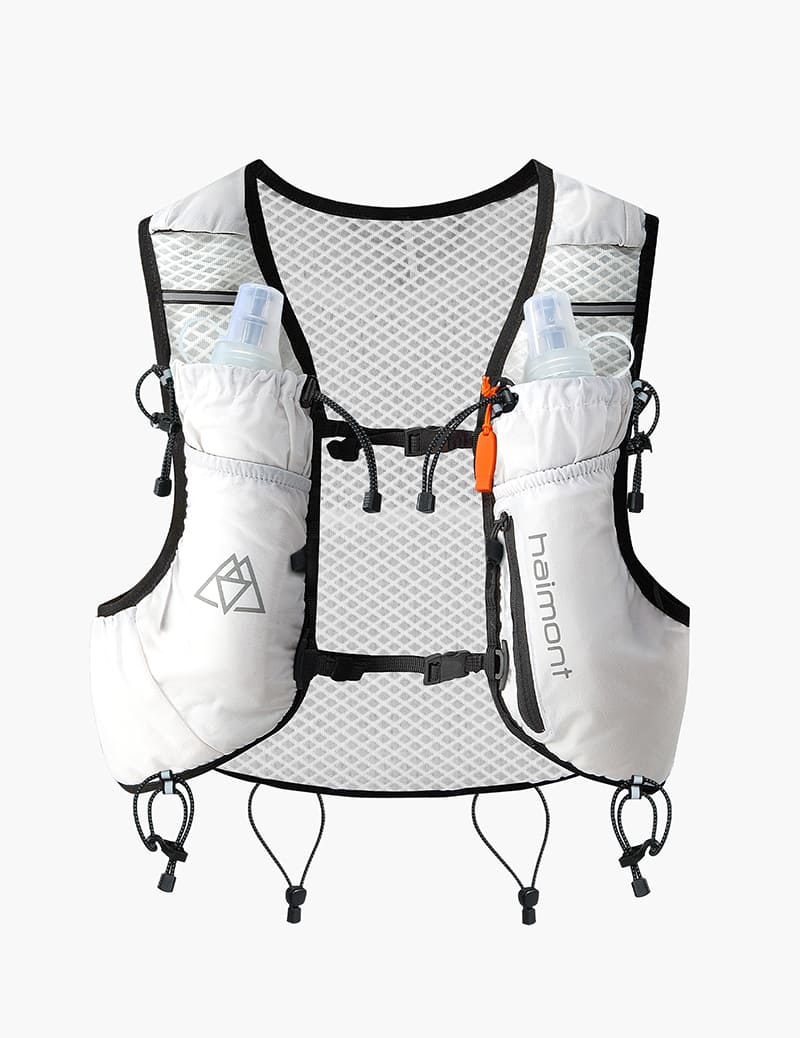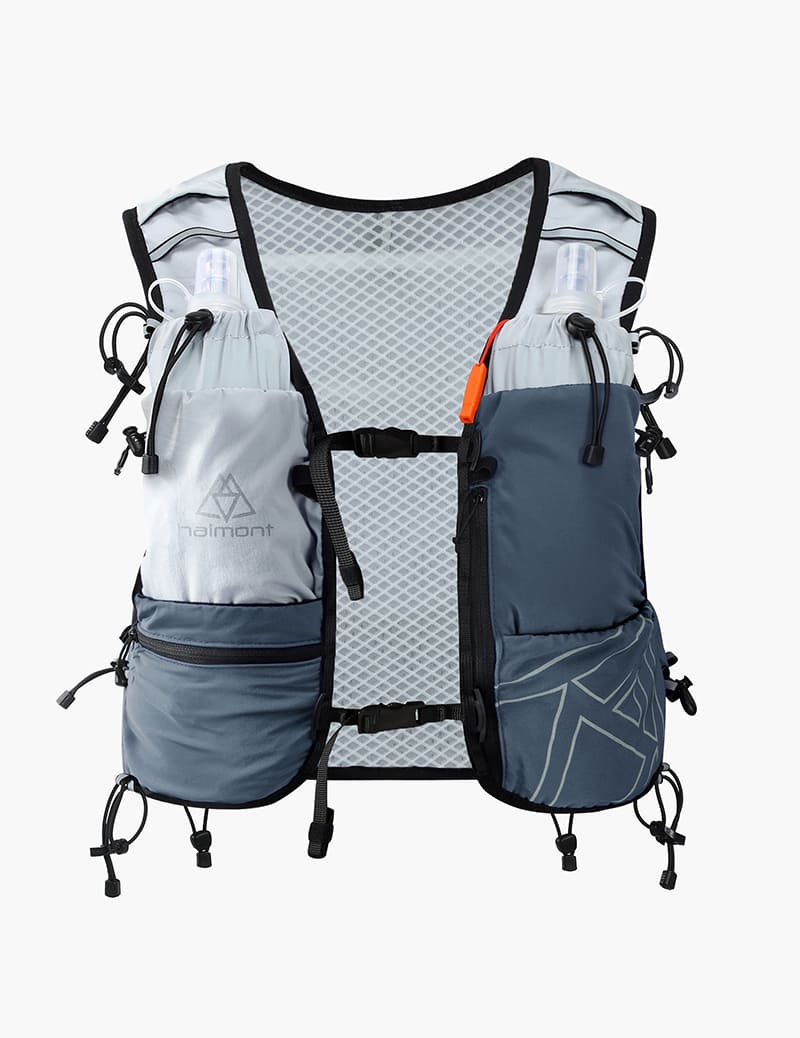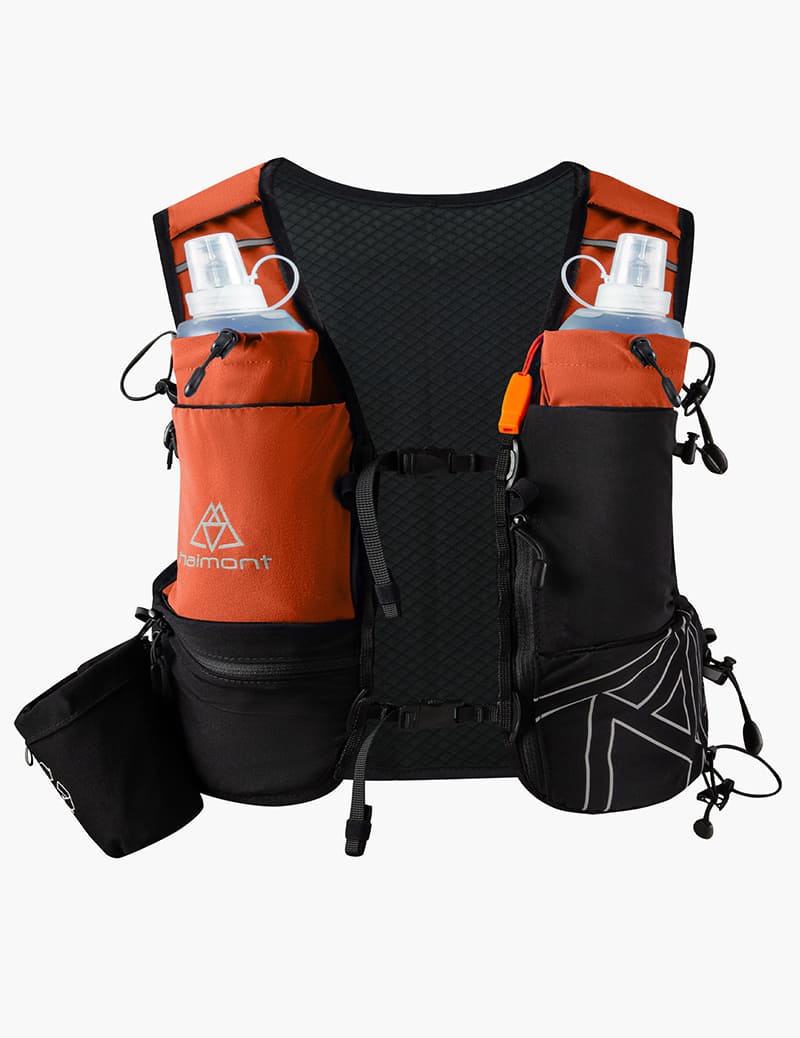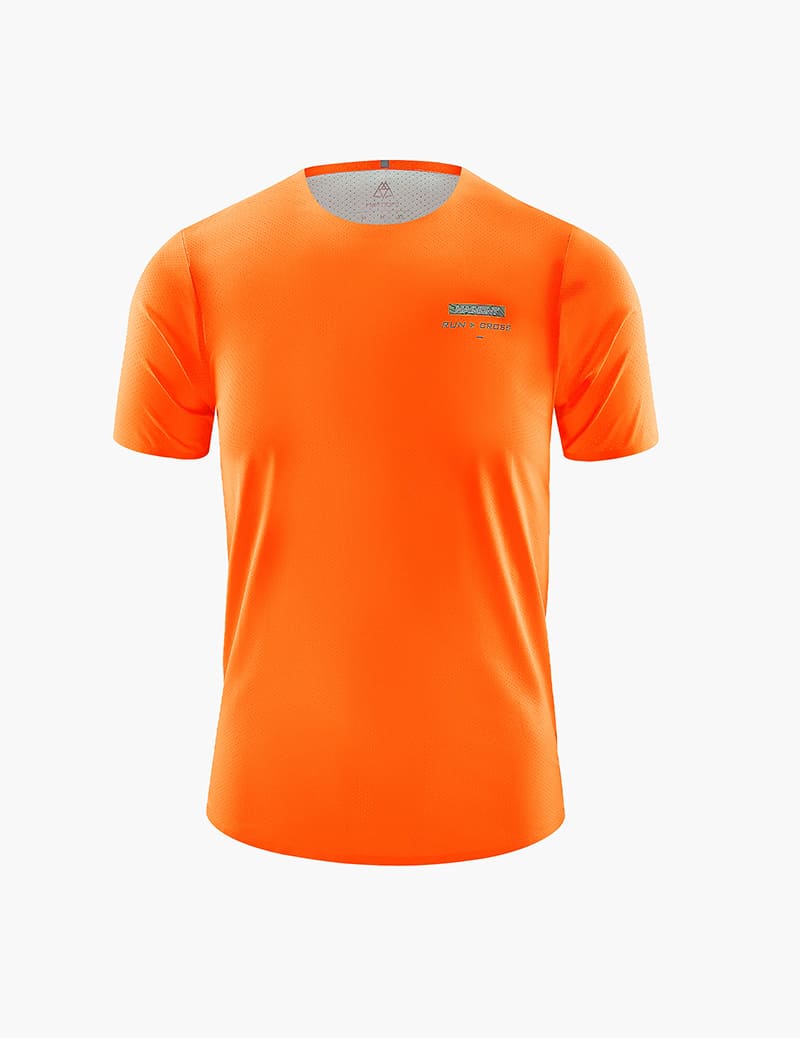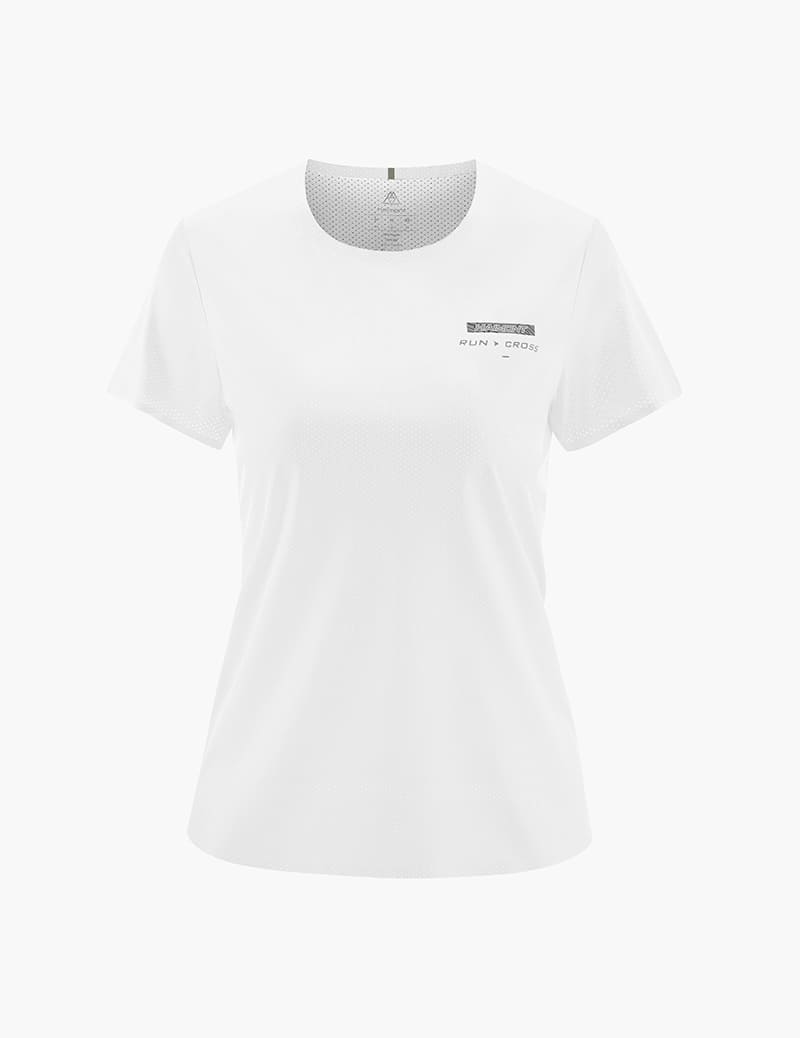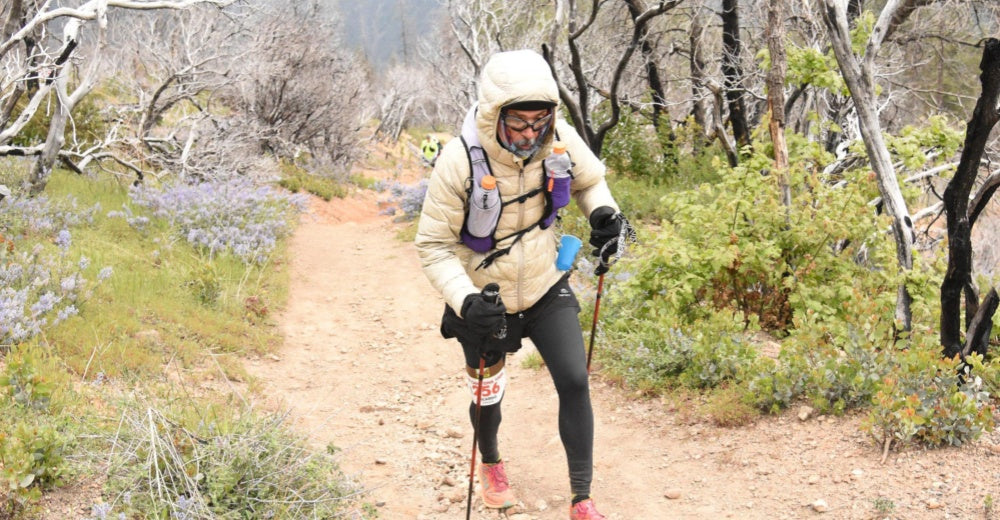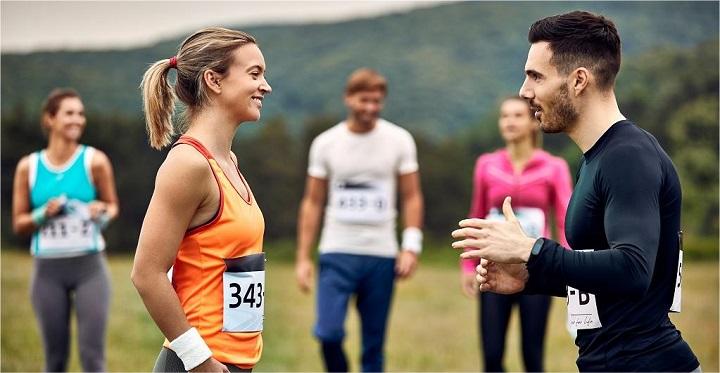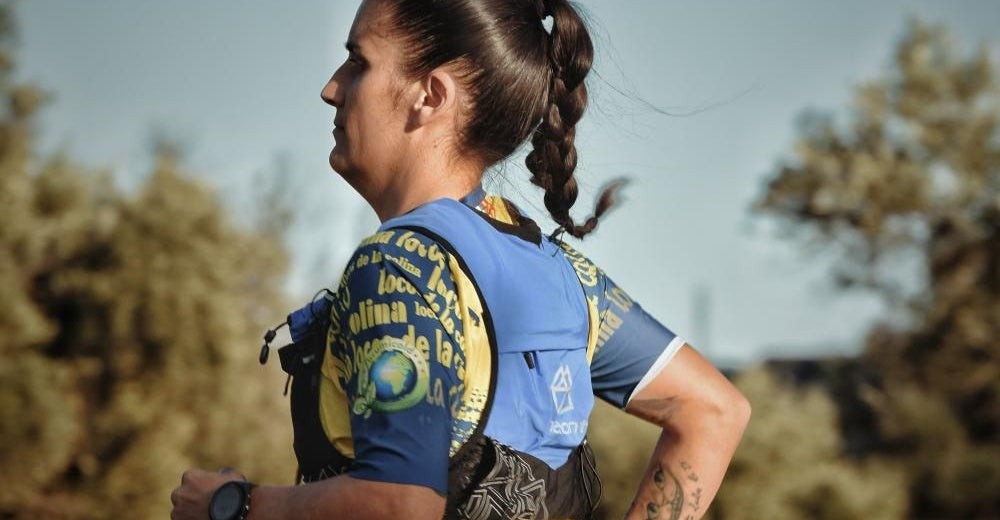Understand the Blue Mountains, conquering 100 kilometers requires not only feet, but also wisdom
For countless trail runners, Ultra-Trail Australia (UTA) is not only a race, but also a "spiritual highland". It is located in the magnificent Blue Mountains National Park in New South Wales, with complex terrain and a changeable climate. It is one of the most representative 100-kilometer trail running races in Australia. The 2025 event is coming as scheduled. How can we complete this challenge more scientifically? The Haimont team combines terrain, weather, and race segmentation strategies to break down the key to passing the UTA 100KM for you.

Terrain analysis: Each section tests your all-round adaptability
The Ultra-Trail Australia 100KM track crosses the diverse landforms of the Blue Mountains National Park, from the edge of the city to the wild canyon, from sunny bare rocks to humid forests, almost covering all the classic terrains of trail running. The following is an analysis and coping strategies for key terrain types.
Stairs (Furber Steps & Giant Stairway)
- Representative sections: Furber Steps at the start/return at the end, Giant Stairway (after CP1).
- Features: A large number of steep stone steps, with a large height difference between the top and the bottom, which impacts the knee joints and quadriceps.
- Risks: premature lactic acid accumulation when going uphill; easy sprains and falls when going downhill.
- Coping strategies:
- Use trekking poles to share leg pressure (if allowed).
- When going uphill, use the "pressing step" method to save effort, and change the breathing rhythm after every two steps.
- When going downhill, keep your knees slightly bent + shorten your stride + touch the ground with your toes to avoid braking-style impact.
- The soles of the shoes need to have a strong grip to avoid slipping.
-
Haimont recommended equipment:
- Trail running shoes: They can bite the ground even when the stone steps are slippery.
- Anti-slip reinforced gloves: When going down the stairs, you can use the railing to avoid hurting your palms.
- Trail running trekking poles (foldable carbon fiber): can be quickly stored in the side pocket of the Haimont backpack.
Forest road + dirt road section (Leura Forest, Jamison Valley)
- Representative section: about KM 20–55, passing through forests and canyons, the ground is mostly soil, tree roots, wet and slippery fallen leaves.
- Features: visual obstruction, uneven ground, wet weather causing slipping.
- Risks: sprained ankle, fall, soaked feet, mosquito bites.
- Coping strategies:
- Maintain the principle of "prudent speed reduction" and always see the foothold.
- Choose shoes and socks that are muddy and water-proof (mid-cut socks are recommended).
- Long-term stay in the wet area of the forest requires cold protection and heat preservation + mosquito protection.
- When passing this section at night, be sure to use a high-brightness headlamp + backup light source.
-
Haimont recommended equipment:
- High-tube off-road socks (moisture-absorbing and quick-drying): reduce the chance of immersion and prevent mud and sand from entering the shoes.
- Insect spray/neck cloth: wear on the neck and behind the ears to block mosquito bites.
- Headlamp + chest light set: dual light source combination, safer night running.
Narrow Ridge Vent (Narrow Ridge Vent Neck Plateau & Ironpot Ridge)
- Representative route: KM 35–60, across the plateau and open ridges, with increased altitude and wide views.
- Features: exposure to the sun, high wind speed, no shelter, strong psychological loneliness.
- Risks: high temperature dehydration, heat stroke, mental fatigue, far from the water replenishment point.
- Coping strategies:
- Forced water replenishment every 30–40 minutes, even if you are not thirsty.
- Use a soft bottle + water bag combination to facilitate switching back and forth and balanced replenishment.
- Increase electrolyte intake to prevent cramps caused by sodium loss.
- Sun protection equipment is essential (hat, ice sleeves, sunscreen).
-
Haimont recommended equipment:
- Haimont off-road backpack 8L/8L Pro version: double soft bottle compartment on the chest + 2L water bag space on the back.
- Quick-drying sun hat + thin ice sleeves: a protective barrier under high-intensity exposure.
- Electrolyte tablet quick-access pouch: designed in the shoulder strap zipper area, easy to access without slowing down.
Gravel + technical downhill (Kedumba Pass, etc.)
- Representative sections: KM 65–90, long downhill, large drop, loose ground.
- Features: Technical runners have obvious advantages and can easily pull away from time.
- Risks: uncontrolled acceleration, front toe hitting the shoe head, severe knee wear
- Strategies:
- Shorten the stride, lean forward slightly with the body's center of gravity but do not "rush" too much.
- Wear off-road shoes with impact-resistant toe + shock-absorbing insoles.
- Pay attention to rhythm control when going downhill, and assess whether the feet are slippery at any time.
-
Haimont recommended equipment:
- Off-road shoes thick sole series: midsole shock absorption + forefoot wear-resistant wrapping, anti-"toe-hitting".
- Shock-absorbing insoles for running: reduce the impact of long-distance downhill on the knees.
- Lightweight knee pads/muscle tape: used to enhance protection of known weak leg areas.
Urban area + hard ground finishing section (3km before the finish line)
- Representative section: The last section returns to Katoomba town, where the ground is mostly hard concrete and sidewalks.
- Features: hot during the day, cold at night, and the spirit enters a "fainting" period.
- Risks: High-contrast hard ground impact, physical fatigue leading to loss of control of technical movements.
- Coping strategies:
- Change dry socks in time or adjust the tightness of shoelaces to prevent blisters.
- Add music assistance and set "target touch points" (such as 100 steps per round of encouragement).
- Remind yourself to straighten your back and raise your head in the last kilometer, and don't relax your running posture.
- Haimont recommended equipment:
- Spare lightweight dry socks are placed in the back warehouse: quick replacement at the supply station.
- Music arm bag + Bluetooth headset combination: end-stage motivational gadget.
- Haimont vest pack storage system: pack "end-stage items into the same block, quickly take them out without mistakes.
Weather forecast: hot during the day, cold at night, always deal with the temperature difference battle
Ultra-Trail Australia is usually held in May every year, which coincides with the early winter in Australia. The track in the Blue Mountains National Park in New South Wales has a large altitude change and the climate is unpredictable. During the race, you may experience a sharp contrast from direct sunlight during the day (over 25°C) to low temperatures in the valley at night (close to 0°C), which puts a double test on the runner's physical adjustment and equipment response.
Track start ~ 10:00 am (cool and foggy)
- Temperature: 4°C~12°C.
- Features: humid in the early morning, foggy in the forest, slippery steps.
- Risk: muscles are not fully warmed up, easy to cramp; cold shoes and socks cause blisters on the soles of the feet.
- Coping suggestions:
- Wear warm and quick-drying long sleeves/light feather vests to start, which can be removed before the first CP.
- Pay attention to warm-up, especially quadriceps + calves + gluteal muscles.
- Use a combination of thin gloves + headscarf + sleeves to facilitate taking off the bag midway.
- Haimont recommended equipment:
- Lightweight warm inner wear + quick-drying fleece sleeves: can be removed in sections, suitable for uphill and after sunrise body temperature changes.
- Non-slip grip off-road shoes: take into account the flexibility of slippery steps and the start burst stage.
- Soft shell headscarf with brim: both windproof and can be used as a neck cover.
10:00 am to 3:00 pm (dry heat exposure)
- Temperature: 20°C~26°C, direct sun without shelter on the ridge.
- Features: high body temperature, fast dehydration, severe electrolyte loss.
- Risks: sunburn, heat stroke, cramps, physical decline.
- Suggestions:
- Control the rhythm of hydration: drink water in small amounts and multiple times every 15-20 minutes.
- Force electrolyte tablets or salt pills to prevent muscle cramps.
- Wear ice sleeves, sun hats, and quick-drying T-shirts to avoid sunburn.
- Food is mainly high in moisture/low in fat, easy to absorb, and low in heat accumulation.
- Haimont recommended equipment:
- UPF50+sun hat+ultra-light ice sleeve suit.
- Haimont trail running T-shirt (ultra-fast drying+side mesh): maximize heat dissipation.
- Trail running backpack with soft bottle system + water bag backup: easy to switch water inlets at any time.
15:00 pm to before sunset (light changes + wind cooling)
- Temperature: 15°C~18°C, wind speed rises in some parts of the plateau.
- Features: physical energy enters the middle and late stages of consumption, wind cooling increases, and some sections of the road begin to be shaded.
- Risks: Ignoring the signs of cooling and not adding clothes in time may cause chills, especially after the supply stop15:00 pm to before sunset (light changes + wind cooling).
- Suggestions:
- Keep the core warm and do not stay at the supply point for a long time to prevent cooling.
- Prepare a thin windbreaker and store it in the outer compartment of the backpack at any time.
- Start the headlamp detection when the light dims and adapt to the dim vision in advance.
- Haimont recommended equipment:
- Ultra-light windproof jacket (hooded): small storage, light weight, easy to put on and take off quickly.
- Put the headlamp on your head in advance: avoid panicking at night.
- Medium-speed energy supply (energy gel + dried fruit + nut mixed bag): continue energy without interruption.
Finish the race after 18:00 in the evening ~ in the early morning (high humidity and cold, mental test at night)
- Temperature: 6°C ~ 0°C, the wind outlet in the valley is lower, and the surface moisture is heavy.
- Features: low temperature + physical energy exhaustion + visual fatigue on the night road.
- Risks: rapid drop in body temperature, mental slackness and taking the wrong road, frozen hands and unable to operate zippers or water bottles.
- Coping suggestions:
- Replace dry clothes/warm layers (such as bag storage/supply station change points).
- Complete night running three-piece set: headlamp + spare battery + reflective clothing.
- Strengthen psychological preparation and set "stage incentive points" (such as the following CP or time threshold).
- Haimont recommended equipment:
- Headlamp (wide viewing angle + strong light mode) + spare light source.
- Warm jacket (recommended synthetic cotton/fleece splicing).
- Warm gloves + Trail running wind pants: keep your hands and feet warm and maintain operational capabilities.
- Reflective vest/shoulder straps: ensure you are seen at night and improve safety.

Notes on segmentation during the race: segmented rhythm, only to achieve sustained output
UTA's track is not only magnificent but also extremely challenging in rhythm. From steep steps, technical forest roads, to long ridges and sandy land under the night, it is like an epic with multiple chapters. Only by running smartly in each section can you finally reach the top of the glory at the finish line.
[Starting point - CP1 (about 0-11KM)]: Start impulsively, steady and orderly
- Terrain features: urban roads + forest roads + famous Furber Stairs (steep drop)
- Rhythm suggestions: warm-up start to avoid overdraft in the early stage. Maintain frequency rather than speed in the downhill stage to save knee joint impact.
- After the start, control the heart rate within the upper limit of Zone 2 (about 70% of the maximum heart rate) in the first 2 kilometers.
- Enter the Furber Stairs downhill in the 3rd kilometer, use the **"light pedaling frequency and fast" pace** to prevent impact and not rushing.
- Don't panic when encountering crowds, keep the thighs starting smoothly and avoid following high pace.
- Pace reference: 10-20 seconds/K slower than the usual LSD, the average pace is 6:00~6:30/K.
- Precautions:
- Start lightly and throw away warm outer clothes appropriately.
- Keep the heart rate between Zone 2~3 and don't chase the front row.
- Pay attention to the slippery downhill and keep your feet steady.
Real case | American athlete Alex Reynolds (2024 UTA100 Men's 58th)
"I saw many people going down very fast on Furber Stairs, but I chose to deliberately slow down the pace-in the end, it turned out that the preserved leg strength helped me to counterattack more than 20 people in the 80th kilometer."
[CP1-CP3 (11-31KM)]: Continuous climbing, testing the endurance chassis
- Terrain features: mixed dirt road + sandy forest road + Narrow Neck Plateau (slow climbing + strong wind).
- Rhythm suggestions: Use trekking poles to save energy, climb with a stable heart rate, and it is normal to have a pace about 2 minutes slower per kilometer than on a flat road.
- All climbing sections use a 2-step-per-pole / 3-step-per-pole rhythm to maintain energy-saving ascent.
- Adjust breathing to nasal inhale and mouth exhale (4 steps inhale + 4 steps exhale) or 3:3 breathing to ensure stable oxygen supply.
- Try to restore rhythm in the flat road running section, and aim to maintain Zone 3 heart rate zones (75-80%).
- Add about 50-100ml of water for every 100m rise to assist cardiopulmonary stability.
- Pace control: Do not chase the pace in the climbing section, and maintain "7 points of effort" with RPE (subjective body experience).
- Precautions:
- Intake energy every 30 minutes (such as energy gel/energy bar).
- It is easy to get cold after sweating in windy places, add/take off clothes in time.
- Pay attention to electrolytes to prevent leg cramps during climbing.
- Haimont recommended equipment:
- High-strength windproof soft shell jacket + quick-access trekking poles (with side bag fixing system).
[CP3-CP5 (31-57KM)]: Psychological collapse area, avoid blind acceleration
- Terrain features: technical downhill + dense forest route + first fatigue peak.
- Rhythm suggestion: maintain the cycle rhythm of "eat + drink + run", do not stop, do not force it.
- Use the strategy of "running for 5 minutes + brisk walking for 2 minutes" or "running on flat ground + walking uphill" to maintain total movement efficiency.
- Check your physical condition every 15 minutes (such as hot spots, signs of cramps, energy).
- If you feel like hitting a wall, don't stop running immediately, but actively switch to a walk-run cycle to reduce energy consumption.
- If the pace drops to above 7:30/K, replenish energy (sugar + salt) immediately to prevent continued decline.
- Precautions:
- Forced energy replenishment every 45 minutes, don't wait to feel it before eating.
- Pay attention to signs of hot spots in the calves, hips, and soles to prevent injuries.
- Don't let overtaking disrupt your rhythm, enter your own stable output range.
Real case | French female runner Claire Lemieux (2024 UTA100 34th place for women)
"I felt like I hit a wall at 40KM, but I forced myself to take a sip of salt water every 10 minutes and a sip of energy gel every 20 minutes. I kept the rhythm, and it became stronger and stronger in the latter part."
[CP5-CP6 (57-78KM)]: As night falls, fighting spirit and fatigue confront each other head-on
- Terrain features: long slow rise + ridge wind outlet + sudden dimming of light.
- Rhythm suggestion: "take a breath" and rush for a while before putting on the headlamp to increase the excitement of the body; then the rhythm stabilizes in Zone 2.
- It is recommended to switch to Zone 2 running (heart rate 60-70%) + Zone 1 brisk walking before and after nightfall.
- If you feel tired after running continuously for more than 10 minutes, immediately switch to 3-minute running / 2-minute walking.
- When attention is reduced, use voice prompts, music, and verbal countdown to reactivate the state.
- When walking uphill: keep an upright posture + Swing your arms widely and use the trekking poles in a 1:1 rhythm to prevent leaning back.
- Notes:
- Wear a warm layer to prevent a sudden drop in body temperature from affecting your judgment.
- Check the power of your headlamp and prepare spare batteries.
- Strengthen psychological self-motivation: Use music, slogans or segmented goals to support your will.
- Haimont recommended equipment:
- Full-view headlamp (300 lumens or more) + reflective vest + fleece gloves set.

[CP6-Finish (78-100KM)]: Conquer Furber Stairs, the final duel of wills
- Terrain features: mostly gravel and trails back to town, the last 950-level Furber Stairs vertical climb.
- Rhythm suggestion: fast walking + rhythm running, do not let the body "sit down".
- Prioritize the use of 2:1 running and walking cycle (run for 2 minutes / walk for 1 minute) to speed up the transition on flat ground.
- The last Furber Stairs adopts a segmented advancement strategy of stopping at 10 steps → climbing 6 steps.
- Hold your thighs with your hands or use the trekking poles to support yourself with both poles to prevent leg cramps in the back section.
- Take a sip of water or sugar after each stair platform to maintain brain energy supply and muscle contraction ability.
- There is no need to refer to kilometer time for the pace, the goal is to continue to advance between each CP section and refuse to walk and stop completely.
- Precautions:
- Try not to sit down for too long at the CP6 supply point to prevent muscles from "shutting down".
- Use trekking poles to assist in the final climb.
- Immediately replenish sugar if you have blurred vision/dizziness.
Real case | Japanese runner Ryota Suzuki (2024 UTA100 first finisher)
"I climbed the last steps while shouting, counting 5, 4, 3 on each step... I thought to myself: If I can hold on for five more steps, I will not be an ordinary person."
The secret to finishing the race: preparation is always more important than you think
Ultra-Trail Australia is not a race that can be completed by "passion", it is more like a systematic test - from training planning to equipment selection, from nutrition strategy to psychological adjustment, even if one detail is off, you may not be able to finish the last section of Furber Stairs.
A successful UTA runner is often not "running faster" than others, but preparing more thoroughly, more specifically, and closer to the real environment. The following are the key preparation dimensions required to finish the race, as well as several real stories of foreign runners in 2024 who completed the challenge with "extreme preparation"
Training preparation: Simulation of actual combat is real training
- Terrain simulation training: Set the training venue to a combination of variable terrain + continuous climbing/descending, especially including long-distance step climbing and technical downhill
- Night running adaptation training: At least 3 long-distance training at night to adapt to judgment under limited vision and physical fatigue
- Equipment adaptation run: Vests, trekking poles, headlights, etc. must be run several times in training, not only to test durability, but also to ensure no friction or repeated adjustments during the race
2024 British athlete Daisy McAllister (UTA50 Women's 19th)
"I live in London and there are no mountains for training. I practice simulated climbing of Furber Stairs on the 13th floor of the office building every day, accumulating more than 20,000 steps in half a year. On the day of the final competition, I climbed the last 950 steps with a smile."
Equipment preparation: Lightweight and durable, with no redundant additions.
- Running backpack: It must meet the UTA mandatory equipment list, but it cannot be too heavy. Choose a 5-8L lightweight vest pack with quick access to energy and the ability to fix trekking poles.
- Night lighting: The main headlamp needs to be more than 300 lumens, with a battery life of ≥8 hours. It is recommended to have two lights as backup.
- Clothing system: To cope with the daytime heat + nighttime low temperatures at the same time, use a three-layer dressing method: quick-drying sweat-wicking layer + lightweight middle layer + windproof and rainproof layer.
2024 German runner Max Vogel (UTA100 men's 45th)
"The temperature difference on my race day was 28°C to 4°C, and I used a segmented adjustable clothing system. The zipper bag on the left side of the backpack holds the jacket, which can be put on and taken off in 20 seconds. I saw at least 5 runners shivering and sitting next to the CP, but I was able to continue running."
Energy and supply plan: set a timeline, not "feeling to eat"
- Fixed rhythm intake method: consume energy (gel, stick, drink mix) every 30-40 minutes, and don't wait until "hungry to eat".
- Electrolyte management: salt pills/electrolyte tablets need to be scheduled for intake frequency (such as 1 pill per hour) to minimize the risk of muscle cramps at night.
- CP station strategy: print the track map and CP distance in advance, and preset the intake target (liquid/physical/preparation) for each supply station.
2024 Canadian female runner Sophie Grant (UTA100 Women's 12th)
"I have a 'food plan' attached to the shoulder strap of my backpack. I write down what to eat in the first hour and how many electrolytes to drink in the fifth hour. My friend ate by 'feeling' and had cramps at 60 kilometers. My plan made me eat from the first kilometer to the 100th kilometer."
Psychological preparation: Fear is not terrible, but being unprepared is the most terrible
- Conduct a "worst case simulation" before the race: imagine cramps, taking the wrong road, running out of battery, hitting the wall, etc., and prepare solutions.
- Set segmented goals: such as "complete the first 50 kilometers first", "reward yourself with a mouthful of hot soup after running the fifth station".
- Practice "deliberate fatigue" during training, such as simulating night running and fasting running after the race to adapt to the extreme state.
Ultra-Trail Australia has never been just a 100-kilometer distance; it is a deep contest of will, planning, and persistence. In the mountains of the Blue Mountains, every step, every supply, and every kilometer of rhythm is a "dialogue" between you and yourself.
We believe that challenges never belong to those with extraordinary talents, but to those who are willing to prepare seriously.
Haimont is willing to go into the mountains and transcend the limits with you, and become your trustworthy equipment partner in every off-road journey.


